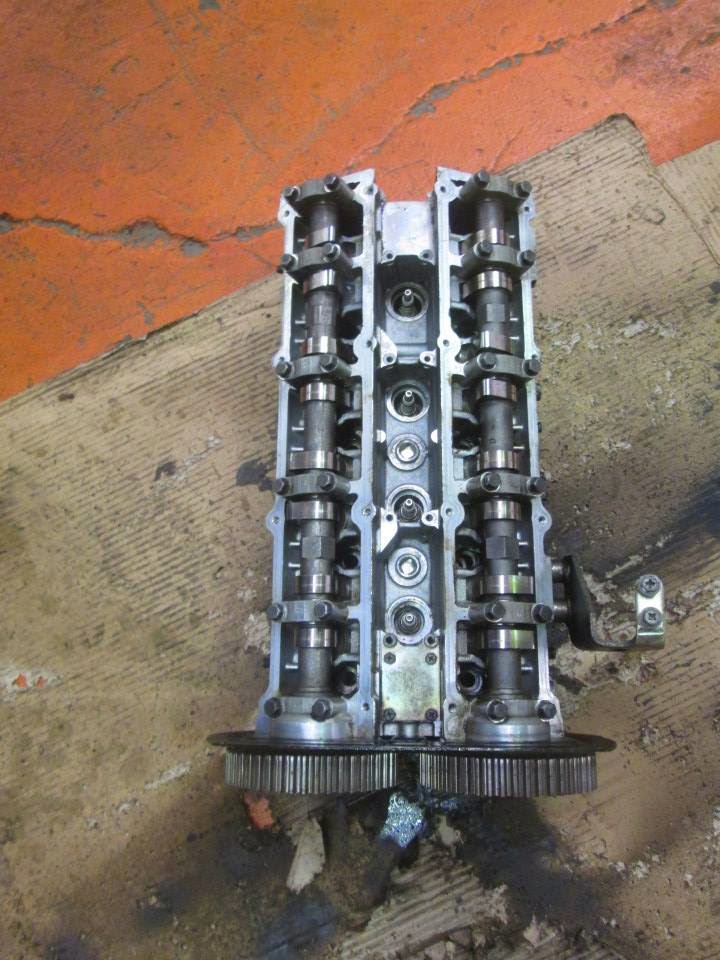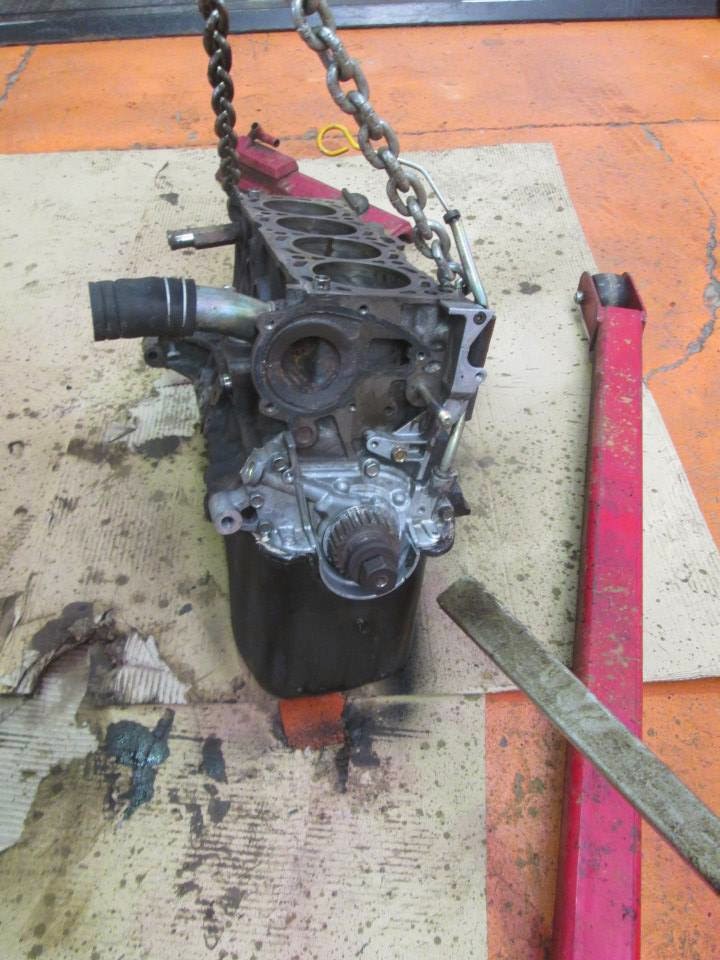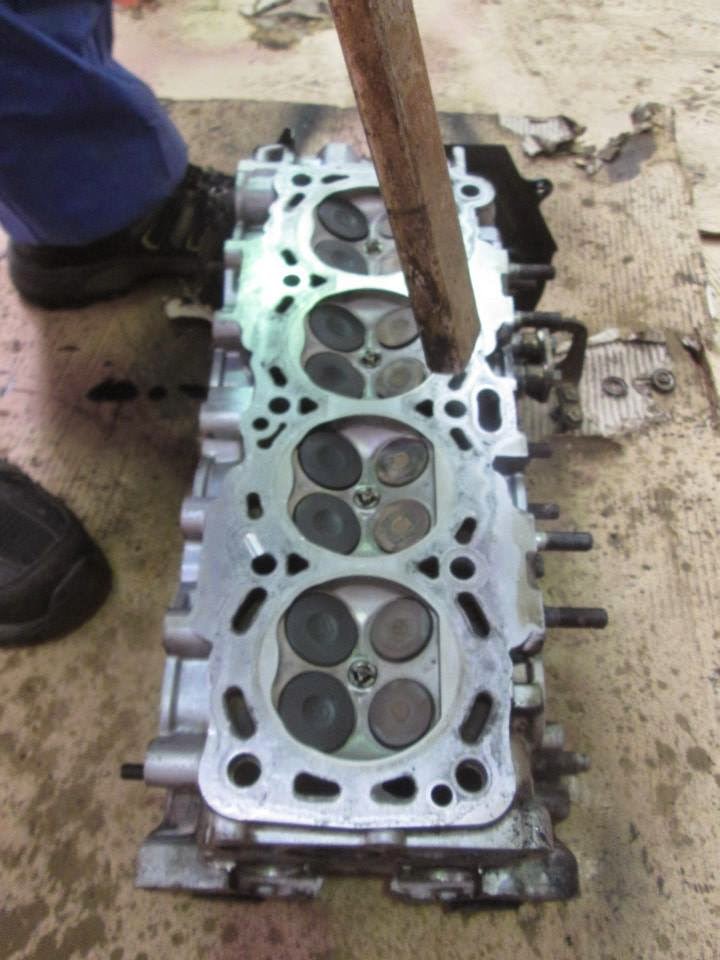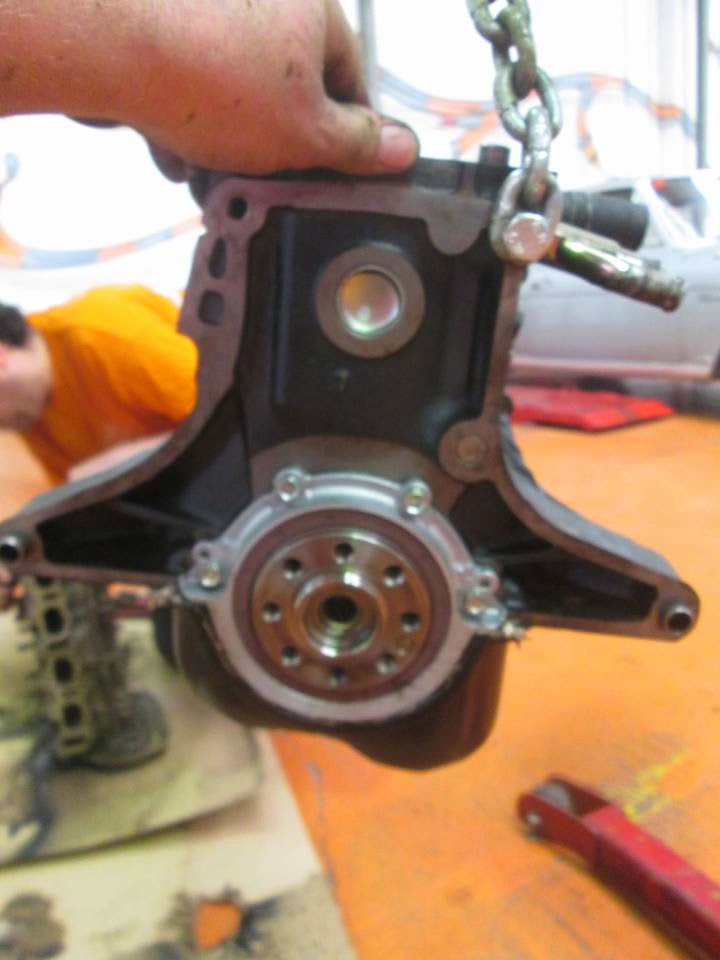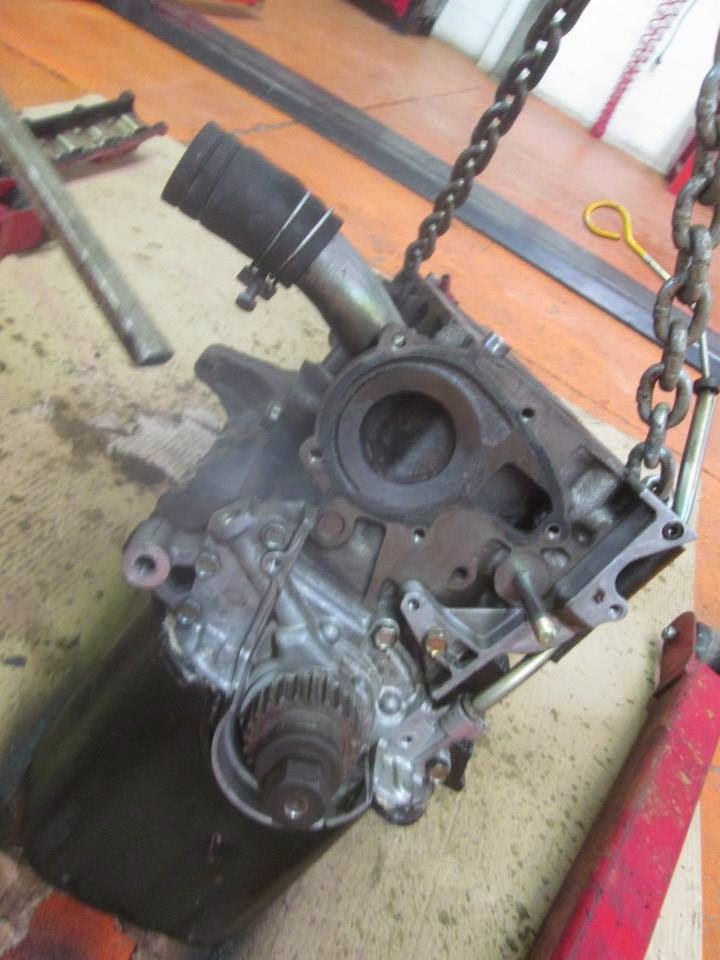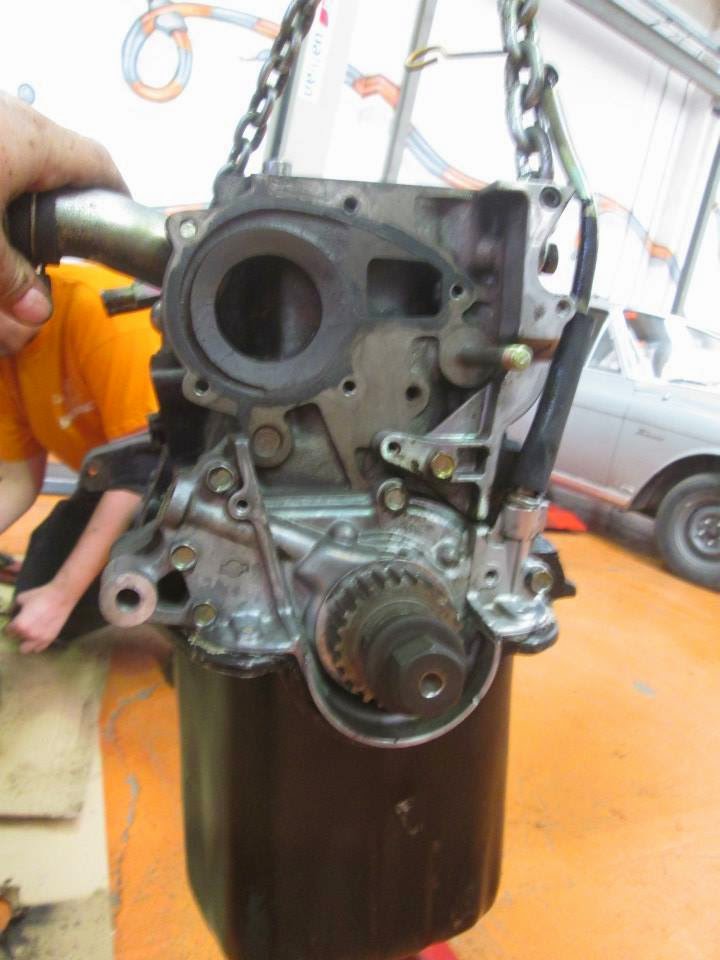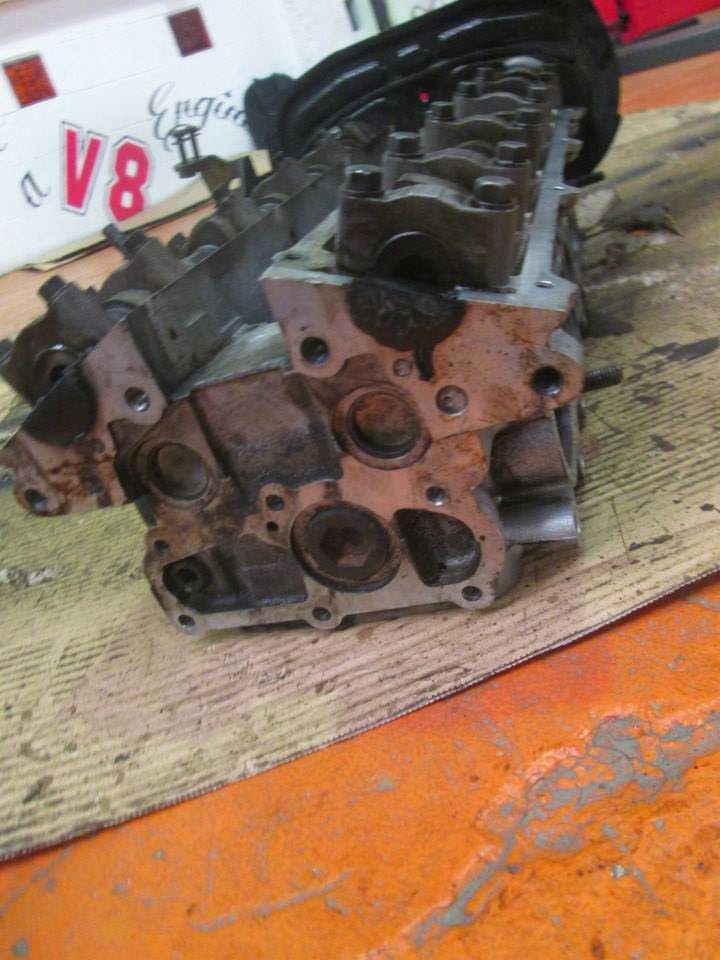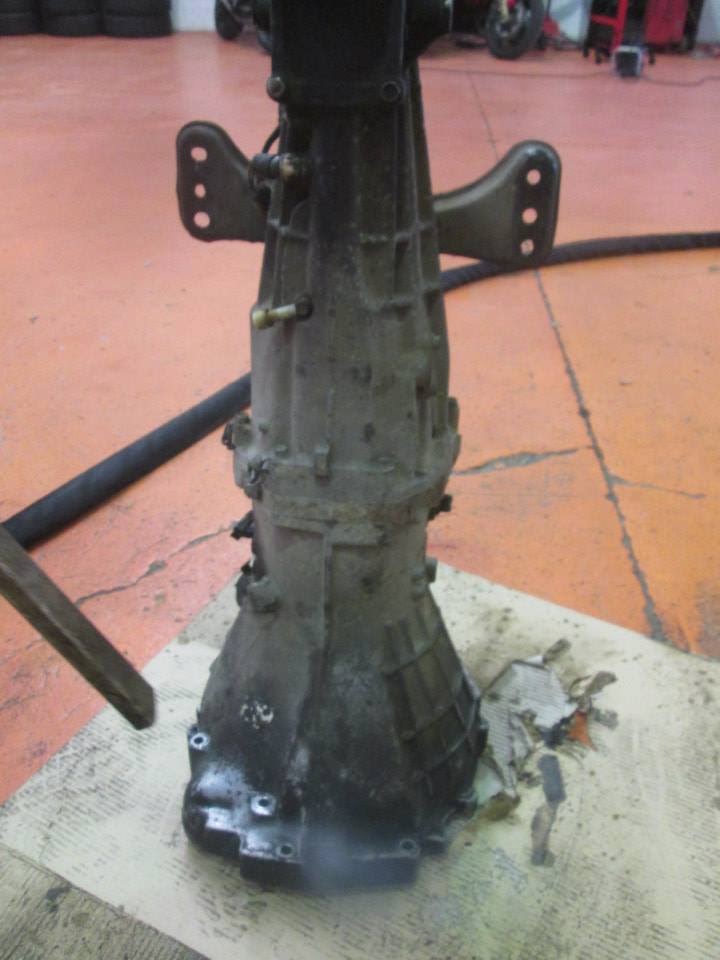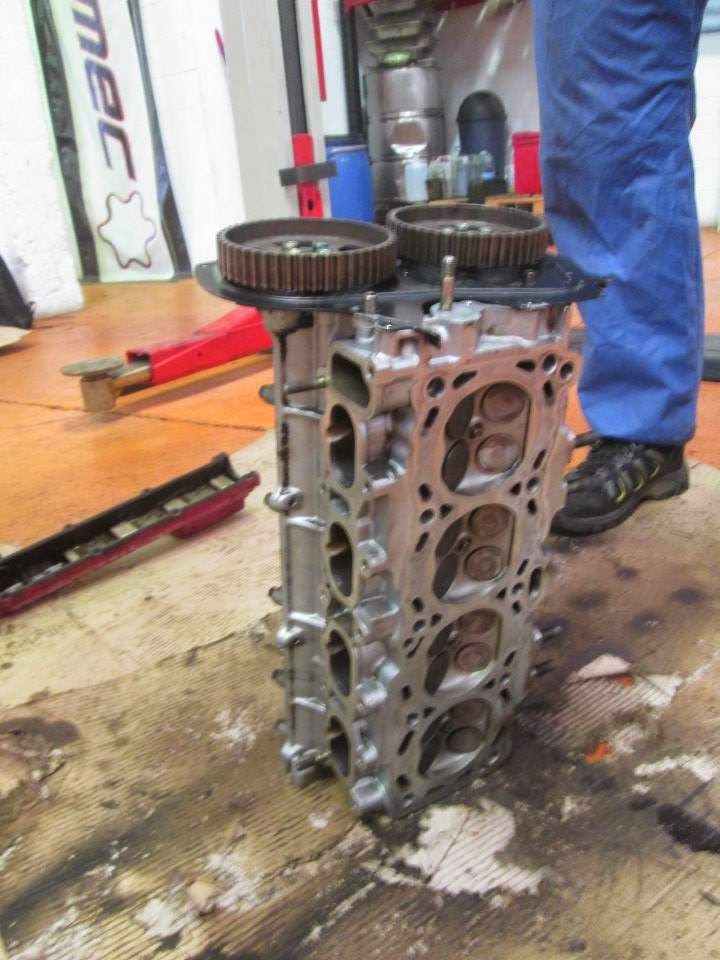As all 200sx enthusiasts know, there are no mint and affordable 200sx’s so far, they are crap or highly modded by someother wich criteria maybe you won’t share. So what I did is go for a crap cheap one and get it right.
I have to say, I’m not a mechanic and my knowledge about that is limited, but I’m learning it 🙂
First I did to the car is all the basics to get it running legaly, because it was long time stopped, so it meant tires, suspension, fixing of direction lights, and all this stuff.
After the car was running sort of fine, I noticed the engine was doing a slight knock, that became a bit stronger as the time was passing, maybe bearings within rods and crankshaft? CA18DET mostly dies there.
Fortunatelly I found a guy who sold me a 6 years ago crashed 200sx with a rebuilt engine just 10.000 km ago very cheap. So I began an engine change, the same model, but still quite a job if you are not an experienced mechanic.
To get a better chance of diagnostics while doing this process, I decided to purchase a Nistune Board + Software, provided that one year ago Matt Brown kindly told me that having the tech specs for further software development wasn’t going to be a problem.
So I installed the Nistune Board and I decided to start the engine change.
Because that car was beside the sea and the coolant circuit wasn’t bleeded properly, it had rust in the waterpump and therefore it was stuck.
To be sure nothing else was damaged, we took of the cylinder head to have a look, it looked fine, but some dirtiness as is normal. So I hired a man who cleaned all the engine inside and outside with iced carbon dioxide shooted at 13bars, strong enough to rip out the dirtiness (and flesh), but gentle with the metals.
I also removed the carter to check the rods, and everything was fine.
Every single part we were removing was cleaned carefully, with carbon dioxide or with gasoline.
All the critical stuff was done with extreme caution, and it went right, all the non critical stuff… it went all wrong, most of the donor car accesories were in bad condition due to the time stopped, so I had to do a mix. Just time, a bit of anoyment (yet fun), and a lot of learnings for the bag.
And finally the engine was in place, and running beautifully, with perfect compression in all 4 cylinders and with a nice below while whomping.
Which takes me to the point I wanted to get to, the technology project I’m about to share.
Watch for the pictures at the end of this post.
Thanks for reading!!.
———————-
Como todos los entusiastas del 200sx sabéis, no hay ninguno impecable y barato, o son basura, o están tremendamente modificados por alguien con el cuál no compartís demasiado su criterio. Así que lo que yo hice es coger uno barato y ponerlo a punto.
Lo primero que le hice al coche es todo lo básico para que pudiese circular legalmente, ya que estuvo mucho tiempo parado, lo que significa neumáticos, suspensión, arreglos en los intermitentes y todo ese tipo de cosas.
Cuando el coche estuvo más o menos “bien”, me dí cuenta de un golpeteo muy sutil que provenía del motor que poco a poco se fue incrementando, quizás casquillos de biela? La mayoría de los CA18DET mueren por ahí :S.
Afortunadamente, conocí a un chico que me vendió un 200sx estrellado 6 años antes y que guardaba en su garaje, ya que tenía el motor reconstruído con sólo 10.000km, así que comencé con un cambio de motor, el mismo modelo, pero aún así bastante trabajo si no eres un mecánico con experiencia.
Para tener una mejor oportunidad de diagnosticar mientras estaba haciendo este proceso, decidí comprar una placa Nistune con su software, ya que Matt Brown tuvo a bien de facilitarme las especificaciones técnicas, para poder desarrollar yo software con la placa posteriormente.
Así que instalé la placa nistune y decidí empezar con el cambio de motor.
Debido a que el coche donante estaba en un subterráneo a 200 metros del mar y el circuito del refrigerante no se había drenado adecuadamente, la bomba del agua estaba clavada y llena de oxido.
Para estar seguros que nada más estaba dañado, levantamos la culata, estaba todo bien en apariencia, pero tenía carbonilla, como es normal. Así que contraté a un señor con una máquina de limpieza con hielo seco a 13 bares de presión, suficiente para sacar la suciedad (y arrancar la carne), pero muy benévolo con los metales.
También quité el cárter para comprobar las bielas, todo estaba bien.
Todo lo que se desarmó fue limpiado con cuidado, bien con hielo seco a presión, o bien con gasolina.
La parte crítica se hizo con extrema precaución, y fue bien, la parte no-crítica… Todo fue mal, casi todos los accesorios del coche donante estaban mal, así que tuve que hacer un poco de mezcla. Sólo tiempo y un poco de molestia (aunque divertida), y un montón de lecciones aprendidas 🙂
Y finalmente el motor estuvo en su sitio, corriendo estupendamente, con compresión perfecta en los 4 cilindros y con un rugido estupendo mientras empujaba.
Lo que me lleva al punto que quería llegar, el proyecto de tecnología que voy a compartir.
Gracias por leer!! 🙂















